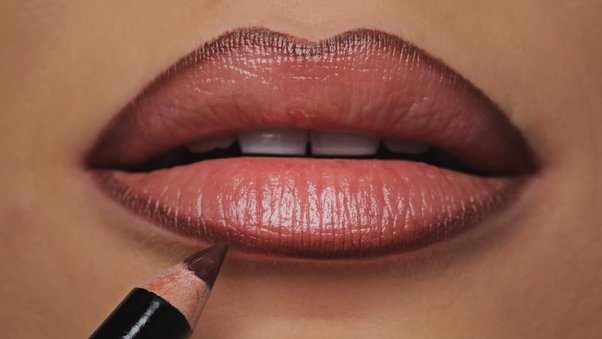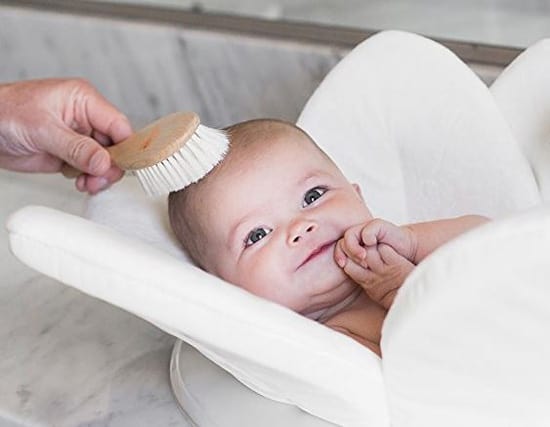The bucket hat, once an essential accessory for fishermen and outdoor enthusiasts, has evolved into a global fashion staple. Its simple, functional design has stood the test of time, morphing from utilitarian headgear to a stylish accessory embraced by everyone from hip-hop artists to runway models. Whether made from durable fabrics like cotton or lightweight materials like nylon, the bucket hat offers both style and practicality. In this article, we’ll explore the rich history of the bucket hat, its resurgence in modern fashion, and its versatile appeal across different cultures and age groups.
The Origins of the Bucket Hat
The bucket hat’s origins date back to the early 1900s, primarily designed for practical purposes. Its roots lie in the farming and fishing communities of Ireland, where it was worn to protect against unpredictable weather. The hat was typically made of wool or tweed and coated with a water-repellent substance like lanolin to shield wearers from rain. The downward-sloping brim design allowed rainwater to roll off, keeping the wearer dry, making it an essential item for those who spent long hours outdoors.
1. Early 20th Century Utility
Farmers, fishermen, and other laborers who worked outdoors relied on the bucket hat for protection from both rain and sun. Unlike traditional wide-brimmed hats, the bucket hat’s compact size and flexible brim made it easy to carry in a pocket or bag when not in use. This portability, combined with its water-resistant properties, established the bucket hat as a trusted companion for outdoor workers.
2. Military Influence
During World War II, the bucket hat gained popularity among military forces. Known as the “Boonie Hat” in the U.S. military, the design was adapted for soldiers fighting in jungle environments. The hat was lightweight, breathable, and provided sun protection, making it ideal for humid, tropical conditions. The military also added practical features like loops around the crown for storing small items such as camouflage or extra ammunition.
The Bucket Hat’s Rise in Fashion
Despite its humble beginnings, the bucket hat began to emerge as a fashionable item in the 1960s. As counterculture movements swept across Europe and the United States, young people embraced the bucket hat as part of their rebellion against traditional fashion norms.
1. The 1960s and 1970s: The Hippie Movement
The 1960s and 1970s were decades of social upheaval, and the fashion world reflected this change. Bucket hats were embraced by the hippie movement as a symbol of laid-back, anti-establishment style. Made from softer materials like cotton and adorned with colorful patterns, the hat became an expression of individuality and nonconformity. The “bohemian” vibe of the hat resonated with those seeking freedom from societal norms.
2. The 1980s: The Hip-Hop Era
The 1980s saw the bucket hat move from the streets of counterculture to the forefront of hip-hop fashion. Icons like LL Cool J and Run-DMC popularized the hat, often wearing it with tracksuits, gold chains, and sneakers. The bucket hat’s wide brim and low profile made it both stylish and functional, providing shade from the sun while exuding a cool, effortless vibe.
Hip-hop artists and their fans wore bucket hats as part of their signature looks, and brands like Kangol capitalized on the trend. Kangol, a British company famous for its headwear, became synonymous with the bucket hat, especially after LL Cool J famously wore their hats in music videos and public appearances. This cemented the bucket hat as a must-have accessory in urban fashion.
3. The 1990s: Streetwear and Skate Culture
The 1990s saw bucket hats embraced by the streetwear and skateboarding communities. With brands like Stüssy, Supreme, and Vans leading the charge, bucket hats became a symbol of laid-back, cool style. They were often paired with oversized clothing, sneakers, and other casual wear, making them a key element in the fashion lexicon of the decade.
During this period, bucket hats began to be made from more lightweight materials such as nylon, making them more suitable for summer wear. They also became popular in rave and festival culture, where their bright colors and playful designs fit perfectly with the neon, whimsical aesthetic of the scene.
The Bucket Hat in High Fashion
As the fashion world moved into the 21st century, the bucket hat continued to evolve. What was once considered a casual accessory for music and street culture began to appear on runways and in high fashion collections. Designers began to reinterpret the bucket hat, incorporating luxury materials and high-concept designs.
1. The Early 2000s: Pop Culture Influence
In the early 2000s, the bucket hat was worn by pop culture icons such as Britney Spears, Justin Timberlake, and Eminem. The hat became a part of mainstream fashion, often paired with low-rise jeans, crop tops, and other trends from the Y2K era. Bucket hats during this time featured bold colors, logos, and patterns, becoming a statement accessory for those looking to embrace the latest trends.
2. Modern Runway Adaptations
Luxury fashion houses like Prada, Gucci, and Louis Vuitton began to incorporate bucket hats into their collections, adding a touch of high fashion to this once-utilitarian item. Prada’s nylon bucket hats, in particular, became a cult favorite. These high-end versions of the bucket hat often featured sleek materials like leather, silk, or technical fabrics, elevating the hat from casual wear to luxury accessory.
The bucket hat has become a versatile piece in fashion collections, showing up in a variety of styles ranging from minimalist and monochrome designs to extravagant, embellished creations. The adaptability of the bucket hat allows designers to play with its form, texture, and function, making it a canvas for creative expression.
The Bucket Hat’s Cultural Significance
The bucket hat is more than just a fashion item; it has deep cultural roots across various communities and has been adopted as a symbol in different contexts.
1. A Symbol of Rebellion and Nonconformity
From its early days in the hippie movement to its prominence in hip-hop and streetwear, the bucket hat has consistently been a symbol of rebellion. Those who wear the bucket hat often do so as a way to push against traditional fashion norms and express their individuality.
2. Music and Subcultures
The bucket hat has a strong connection to the world of music. In addition to its popularity in hip-hop, it has also been embraced by rave and festival culture, where it is often worn as part of a carefree, colorful ensemble. The bucket hat’s association with subcultures makes it a key accessory for those looking to express their connection to a particular movement or lifestyle.
3. Cross-Cultural Appeal
One of the reasons the bucket hat has endured for so long is its universal appeal. It transcends cultural boundaries and has been adopted by people from all walks of life. Whether worn by farmers in rural Ireland, soldiers in Vietnam, or streetwear enthusiasts in New York, the bucket hat remains a functional, fashionable item that serves a variety of purposes.
The Evolution of Bucket Hat Materials and Designs
As fashion has evolved, so too has the design and materials of the bucket hat. Today, bucket hats are made from a wide range of materials, each with its own unique look and feel.
1. Traditional Fabrics
The classic bucket hat is made from cotton, wool, or canvas, providing durability and protection from the elements. These materials are ideal for outdoor activities and are often chosen for their water-resistant properties.
2. Technical Fabrics
In recent years, technical fabrics such as nylon, polyester, and Gore-Tex have become popular choices for bucket hats. These materials offer lightweight, breathable protection, making them perfect for warm-weather activities like hiking, fishing, and beach outings.
3. Luxury Materials
Luxury bucket hats crafted from materials like silk, leather, and suede have elevated the item to high fashion. These premium versions of the bucket hat are often adorned with embellishments such as embroidery, sequins, and metal hardware, adding an extra layer of sophistication.
4. Sustainable Fabrics
With the rise of sustainable fashion, many brands are now offering bucket hats made from eco-friendly materials like organic cotton, recycled polyester, and hemp. These options appeal to environmentally conscious consumers who want to make a positive impact while staying stylish.
How to Style a Bucket Hat
The versatility of the bucket hat makes it easy to incorporate into a wide range of outfits. Whether you’re aiming for a laid-back casual look or something more polished, the bucket hat can be the perfect finishing touch.
1. Casual Streetwear
For a relaxed, everyday look, pair a bucket hat with oversized T-shirts, hoodies, and jeans or shorts. Opt for a neutral-colored hat like black, navy, or beige to keep the outfit cohesive, or choose a bold pattern to add a pop of color to your ensemble.
2. Festival Fashion
When attending festivals or outdoor events, bucket hats can add an element of fun to your outfit. Bright colors, playful patterns, and materials like mesh or crochet are ideal for creating a festive vibe. Pair the hat with breezy dresses, cropped tops, or denim cutoffs for a carefree, bohemian look.
3. High-Fashion Flair
For a more polished look, choose a bucket hat made from luxury materials such as leather, suede, or silk. Pair the hat with a tailored blazer, sleek trousers, or a chic dress to elevate the outfit. Monochrome or minimalist bucket hats can add a subtle yet stylish touch to an otherwise sophisticated ensemble.
4. Beach or Outdoor Adventures
Bucket hats are practical for outdoor activities, providing sun protection and shade. Choose lightweight, breathable fabrics and pair the hat with swimwear, cover-ups, or activewear. A wide-brimmed bucket hat can offer additional coverage, making it ideal for long days in the sun.
The Future of the Bucket Hat
As fashion continues to evolve, the bucket hat will likely remain a staple accessory, adapting to new trends and technologies. With its enduring appeal and versatility, the bucket hat is well-positioned to continue its influence across various fashion landscapes.
1. Innovation in Materials
Future developments in fabric technology could lead to new iterations of the bucket hat. Innovations such as smart fabrics with UV protection, moisture-wicking properties, or even integrated cooling systems may enhance the functionality and appeal of the bucket hat.
2. Cultural Crossovers
As global fashion trends continue to merge, the bucket hat may see new cultural crossovers, incorporating elements from different styles and regions. This fusion could lead to fresh and exciting designs that appeal to a broader audience.
3. Sustainability and Ethical Fashion
The emphasis on sustainability in fashion is likely to impact the bucket hat market, with more brands focusing on eco-friendly materials and ethical production practices. Consumers’ increasing demand for sustainable fashion options will drive innovation in this area.
Conclusion
The bucket hat’s journey from a practical tool for outdoor workers to a global fashion icon is a testament to its versatility and enduring appeal. Its ability to seamlessly transition from functional headgear to a stylish accessory makes it a unique and cherished item in the world of fashion.
Whether you’re drawn to its practical benefits, its cultural significance, or its fashion-forward potential, the bucket hat remains a symbol of both utility and style. As trends continue to evolve and new materials and designs emerge, the bucket hat is sure to maintain its place in fashion history, continuing to captivate and inspire across generations.



